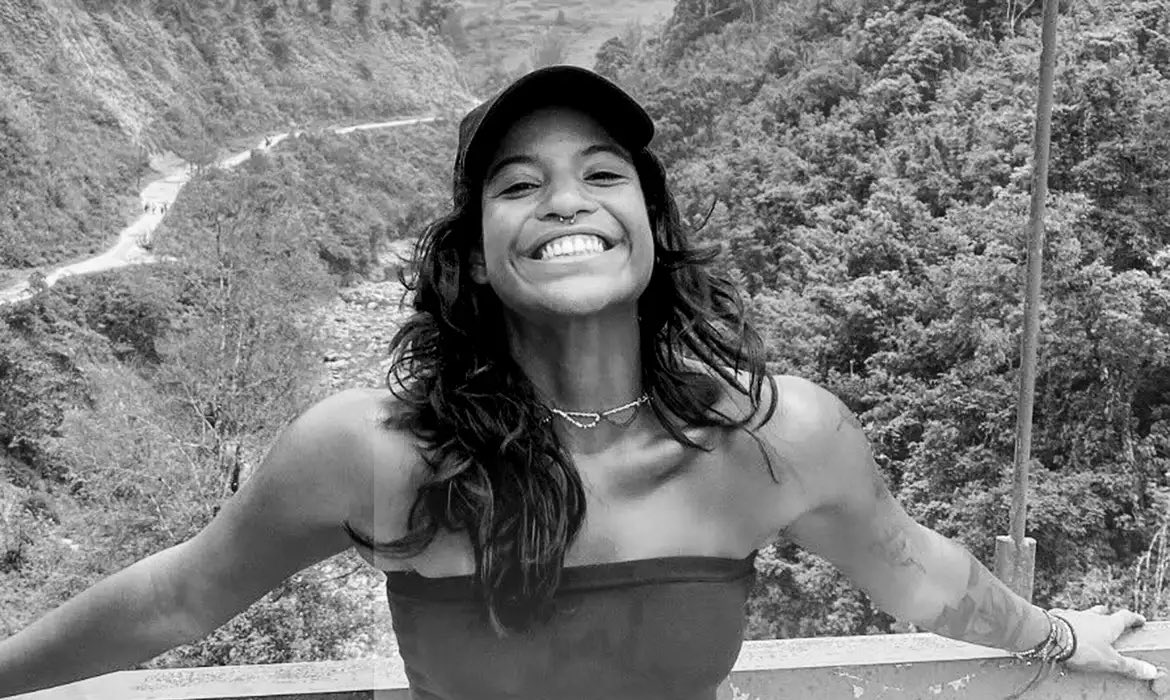A Heartbreaking Loss on Indonesia’s Iconic Volcano
As of 09:22 AM WIB on Wednesday, June 25, 2025, the world is reeling from the tragic death of Juliana Marins, a 26-year-old Brazilian adventurer who lost her life after a devastating fall on Mount Rinjani, an active volcano on Indonesia’s Lombok Island. The incident, which unfolded over four harrowing days, has captured global attention, shedding light on the dangers of high-altitude trekking and the challenges of rescue missions in extreme conditions. Marins, a spirited traveler from Niterói, Rio de Janeiro, was on a backpacking journey across Asia when she slipped into a steep ravine on June 21, 2025. Despite a valiant rescue effort involving 50 personnel, three helicopters, and cutting-edge drones, she was found deceased on June 24. This in-depth report explores the timeline of the tragedy, the environmental and logistical hurdles faced by rescuers, and the broader implications for tourism safety and international cooperation.
Who Was Juliana Marins? A Life of Adventure Cut Short
Juliana Marins was more than just a tourist statistic—she was a vibrant soul with a passion for exploration. A 26-year-old advertising professional and dancer, Marins left her hometown of Niterói in February 2025 for an ambitious backpacking trip across Asia. Her social media was filled with stunning photos from Thailand, Vietnam, and Indonesia, showcasing her love for nature and culture. Friends described her as fearless, with a dance-honed physique that made her well-suited for the rigors of trekking. Her decision to tackle Mount Rinjani, a 3,726-meter volcanic giant, was a natural extension of her adventurous spirit, but it ended in a tragedy that has left the world mourning.
Marins joined a group of five other tourists and a local guide for the trek, a popular choice among adventurers drawn to Rinjani’s breathtaking crater lake, Segara Anak. Little did she know that this journey would become her last. Her story has resonated deeply, prompting an outpouring of tributes and calls for improved safety measures in one of Indonesia’s most treacherous landscapes.
Entenda o caso de Juliana Marins, a brasileira que faleceu após cair no vulcão na Indonésia: pic.twitter.com/nfIvkZJfXj
— 15News (@15News) June 25, 2025
The Fatal Fall: What Happened on Mount Rinjani?
The incident occurred on the morning of June 21, 2025, around 6:30 AM local time. Marins was trekking with her group when exhaustion set in, a common challenge on Rinjani’s steep slopes. She asked the guide for a break, and as they began to descend, disaster struck. Witnesses reported that she slipped on the slick, ash-covered terrain near the crater rim, sliding an estimated 300 to 600 meters down a jagged ravine. The fall’s violence likely caused severe injuries—fractures, internal bleeding, and possibly a traumatic brain injury—though initial drone footage later showed faint signs of life, including small hand movements.
Mount Rinjani’s reputation as a double-edged sword comes from its stunning beauty and deadly risks. The volcano, part of the Pacific Ring of Fire, is known for its unstable slopes, loose volcanic ash, and sudden weather changes. Historical incidents, like the 2022 death of a Portuguese hiker from a similar fall, highlight the mountain’s dangers. For Marins, the combination of fatigue and the treacherous terrain proved fatal, setting the stage for a rescue effort that would test the limits of human and technological capability.
The Rescue Effort: A Race Against Time and Nature
The moment Marins’ fall was reported, a massive rescue operation swung into action. Local authorities deployed around 50 personnel, including mountain rescue experts, park rangers, and medical teams. Three helicopters took to the skies, supported by drones equipped with high-resolution and thermal imaging cameras. By late June 21, drones pinpointed Marins’ location—about 600 meters below the trail, wedged in a narrow crevice. Her faint movements gave hope, but the environment quickly turned that hope into a desperate struggle.
The rescue faced overwhelming obstacles. Dense fog blanketed the mountain, reducing visibility to near zero and grounding helicopters at critical moments. Strong winds, a frequent hazard at Rinjani’s altitude, threatened rotor stability, risking crashes. The terrain itself was a nightmare—loose volcanic ash and sharp rocks offered no safe landing spots or anchor points for ropes. The ropes available were too short to reach her, and the constant threat of landslides kept ground teams at bay. Over the next four days, Marins’ position shifted as she slid deeper into the ravine, a movement likely caused by minor landslides or her own efforts to adjust.
Drones proved invaluable, providing real-time imagery to guide the teams, but their inability to deliver supplies or extract her exposed a technological gap. Helicopters made repeated attempts, but the weather and terrain made aerial rescue impossible. Ground crews tried extending ropes and using climbing gear, but time ran out. On the morning of June 24, rescuers confirmed Marins’ death after reaching her body. The recovery was delayed until June 25 due to persistent fog, with her body airlifted once conditions cleared. The park was temporarily closed in her memory, leaving rescuers and the public grappling with the outcome.
Why Was the Rescue So Difficult? Unpacking the Challenges
Mount Rinjani’s environment was the primary adversary in this tragedy. The volcanic ash, turned slick by occasional rain, created a surface where even the surest footing could fail. The crater rim, a narrow and exposed path, is a known danger zone, worsened by June’s typical fog and wind. Temperature drops to near freezing at night added hypothermia to the list of threats, while the lack of immediate access to water or shelter compounded Marins’ suffering.
Human factors played a role too. Marins’ fatigue, a natural response to the grueling climb, likely dulled her reflexes, contributing to the slip. The guide’s decision to descend without additional safety measures—such as harnesses or a reinforced route—has raised questions about preparedness. The rescue effort, while swift, was hampered by inadequate equipment. Short ropes and the absence of a specialized high-altitude rescue team reflected a broader gap in Indonesia’s emergency infrastructure, a concern amplified by the post-pandemic tourism boom.
Weather was the final blow. The dense fog and strong winds from June 21 to 24 not only obscured visibility but also disrupted aerial operations. The inability to predict these shifts limited strategic planning, a challenge common to volcanic regions. Together, these factors created a perfect storm that no amount of determination could overcome in time.
The Medical Toll: What Likely Killed Juliana Marins
The fall’s initial impact was devastating. Medical experts suggest Marins suffered multiple fractures, internal hemorrhaging, and possibly a traumatic brain injury. Her survival beyond the first hours indicates these weren’t immediately fatal, but the subsequent exposure was relentless. Trapped in a crevice with temperatures dropping, she faced hypothermia, dehydration, and shock. Even if rescuers had reached her, the severity of her injuries might have required surgery unavailable in such a remote area. The four-day ordeal, marked by cold and isolation, ultimately led to organ failure, sealing her fate.
A Global Ripple Effect: What This Means for the Future
Marins’ death has sent shockwaves beyond Indonesia, sparking urgent conversations about safety and responsibility. The tourism surge since the post-pandemic recovery has flooded sites like Rinjani with visitors, often without matching improvements in infrastructure. In May 2025, the Indonesian government announced plans to upgrade emergency facilities on volcanic sites, but implementation lags behind the need. Experts now call for mandatory safety briefings, better trail maintenance, and emergency shelters to prevent future tragedies.
Internationally, Brazil has stepped up. The Ministry of Foreign Affairs, building on a 2024 policy to enhance consular support, worked closely with Jakarta to manage Marins’ recovery and repatriation. This incident underscores the need for bilateral agreements—shared training and equipment loans—to handle transcontinental emergencies. Brazilian diplomats have also pushed for an investigation into the rescue’s shortcomings, a move that could strengthen global safety standards.
Technology offers hope. The drones used in the search highlighted their potential, and late 2025 trials are planned to develop models capable of delivering supplies or extracting individuals. Helicopter upgrades, like stabilized rotors and better weather radar, could improve aerial rescues. These innovations, paired with ground strategies, might save lives in the future.
Public awareness has soared too. Marins’ family has debunked rumors of water or blanket deliveries, clarifying the rescue’s true challenges. This transparency has fueled discussions on responsible travel, urging adventurers to prioritize safety gear and local expertise. Social media tributes and news coverage have turned her story into a rallying cry for change.
Lessons from the Tragedy: How to Prevent the Next One
The loss of Juliana Marins offers critical lessons. Rescue teams need specialized training for volcanic terrains, mastering rope techniques and landslide risks. Longer, sturdier ropes and portable shelters could combat exposure. International collaboration could bring in experts from regions like the Alps or Himalayas, enhancing local capabilities.
Weather monitoring is another priority. Installing meteorological stations on Rinjani could provide real-time data, improving rescue timing and trek planning. Satellite forecasting and ground sensors would boost predictability, reducing weather-related risks.
Tourists need education too. Mandatory pre-trek orientations—covering fatigue management, proper footwear, and emergency protocols—could save lives. Apps with live trail updates would empower climbers with vital information. Indonesia’s planned infrastructure upgrades should include helipads, communication networks, and medical evacuation routes, while a tiered access system could restrict novices from high-risk zones.
Conclusion: Honoring Juliana’s Memory with Action
As of 09:22 AM WIB on June 25, 2025, the recovery of Juliana Marins’ body marks the end of a tragic chapter on Mount Rinjani. Her death, a result of a fatal fall and an unsuccessful rescue amid unforgiving conditions, has exposed the fragility of adventure tourism and the need for better preparedness. The Indonesian government, Brazilian authorities, and the global trekking community now face a shared responsibility to act. By investing in advanced technology, enhanced training, and robust safety policies, they can honor Marins’ memory and ensure that the allure of nature’s peaks doesn’t claim more lives. Her story is a call to balance exploration with caution, a legacy that could transform the future of mountaineering.


